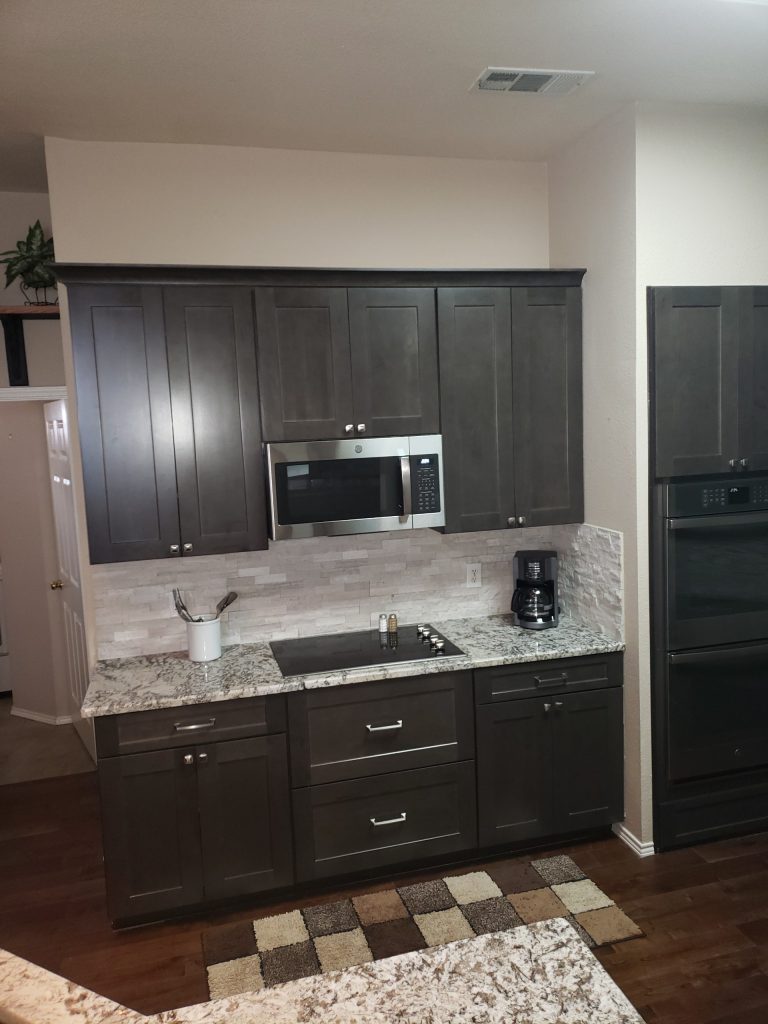What is a Realistic Budget for a Kitchen Remodel?

The kitchen is often considered the heart of the home. It’s where meals are prepared, memories are made, and laughter fills the air. But when your kitchen starts to feel outdated or dysfunctional, a remodel might be on the horizon. However, diving headfirst into a kitchen renovation can be daunting, especially when it comes to budgeting.
This comprehensive guide will equip you with the knowledge and tools to craft a realistic budget for your kitchen remodel. We’ll explore the key factors that influence costs, delve into budget breakdowns, and provide tips for maximizing value and staying on track.
Understanding the Kitchen Remodel Budget Spectrum
The price tag for a kitchen remodel can vary dramatically, ranging from a few thousand dollars for a cosmetic refresh to upwards of $100,000 for a complete overhaul. This vast spectrum underscores the importance of defining your project’s scope and prioritizing your needs. Here’s a breakdown of the typical budget ranges for kitchen remodels:
-
Cosmetic Refresh (Low-End Budget: $5,000: $15,000): This involves updating the aesthetics of your kitchen without altering the layout or plumbing. Think repainting cabinets, replacing hardware, installing a new backsplash, or upgrading countertops with a more affordable material like laminate.
-
Mid-Range Remodel ($15,000: $35,000): This expands on the cosmetic refresh by potentially replacing appliances, installing new flooring, and making minor changes to the layout. You might opt for stock cabinets or RTA (Ready To Assemble) cabinets to keep costs in check.
-
High-End Remodel ($35,000: $75,000+): Here, you can explore custom cabinetry, high-end appliances, luxurious countertops like granite or quartz, and potentially move plumbing or electrical lines for a more dramatic layout change.
Breaking Down the Budget: Where Does Your Money Go?
Once you have a general idea of the budget range for your desired remodel, it’s crucial to understand how that money will be allocated. Here’s a breakdown of the major cost components:
-
Cabinets: These are often the biggest expense, accounting for 20-30% of the budget. Custom cabinets will cost significantly more than stock or RTA cabinets.
-
Appliances: New appliances can range from a few hundred dollars to several thousand dollars each, depending on the brand, features, and size.
-
Countertops: The cost of countertops varies depending on the material. Laminate is a budget-friendly option, while granite, quartz, and natural stone are on the higher end.
-
Flooring: The cost of flooring depends on the material you choose. Tile, luxury vinyl plank (LVP), and engineered hardwood are popular options, each with varying price points.
-
Demolition and Disposal: Removing old cabinets, countertops, and flooring will incur disposal costs. Factor this into your budget.
-
Labor: Contractors typically charge by the hour or by the square foot. The complexity of your project will determine the labor cost.
-
Permits: Depending on the scope of your remodel, you might require permits from your local building department. Factor in the cost of obtaining these permits.
Prioritizing for Value: Getting the Most Out of Your Budget
With a finite budget, it’s essential to prioritize your spending to maximize the value you get from your remodel. Here are some tips:
-
Focus on functionality: Think about how you use your kitchen and prioritize improvements that will enhance your workflow. Consider cabinet layout, appliance placement, and storage solutions.
-
Shop around and compare prices: Get quotes from multiple contractors and compare material costs from different retailers. Don’t be afraid to negotiate, especially for larger projects.
-
Consider DIY projects: If you’re handy, tackling some demolition work or painting cabinets yourself can save on labor costs. However, be realistic about your skillset and only undertake tasks you’re comfortable with.
-
Plan for contingencies: Allocate a buffer of 10-20% to your budget for unexpected costs that might arise during the remodel.
-
Embrace smart alternatives: Luxury doesn’t have to break the bank. Explore high-quality laminate for countertops or RTA cabinets for a cost-effective alternative to custom cabinetry.
Beyond the Budget: Additional Considerations
A successful kitchen remodel extends beyond just the dollars and cents. Here are some additional factors to keep in mind:
-
Timeline: Discuss realistic timelines with your contractor. Kitchen remodels can be disruptive, so factor in the time it will take to complete the project.
-
Permits and Inspections: Ensure you obtain all necessary permits before starting the remodel.
-
Choosing the Right Contractor: A Crucial Investment
Finding a qualified and experienced contractor is paramount to a successful kitchen remodel. Here’s how to navigate the selection process:
- Get recommendations: Ask friends, family, and neighbors for referrals to contractors they’ve had positive experiences with.
- Check online reviews: Research potential contractors online and read reviews from past clients. Pay attention to both positive and negative feedback.
- Get multiple quotes: Obtain quotes from at least three different contractors. Ensure the quotes are detailed and outline the scope of work, materials included, labor costs, and timeline.
- Ask questions: Don’t hesitate to ask potential contractors questions about their experience, licensing, insurance, and warranty policies.
- Check references: Follow up with references provided by the contractor to get firsthand accounts of their work ethic and quality.
Financing Your Kitchen Remodel
Several financing options can help you manage the cost of your kitchen remodel. Here are some common approaches:
- Cash savings: If you have the financial resources, paying for the remodel upfront can save you money on interest.
- Home equity loan or line of credit: This allows you to borrow against the equity you’ve built up in your home.
- Personal loan: This can be a good option for smaller remodels, but interest rates may be higher than with a home equity loan.
- Credit cards: While convenient, credit cards typically have high-interest rates. Only consider this option if you can pay off the balance quickly.
The Rewards of a Well-Planned Kitchen Remodel
A well-planned kitchen remodel can significantly enhance your home’s value, functionality, and aesthetics. It can create a more enjoyable cooking and dining experience for you and your family. By carefully considering your budget, prioritizing your needs, and making smart choices, you can transform your kitchen into a space that reflects your style and fulfills your culinary aspirations.
Remember:
- A kitchen remodel is an investment. Take the time to plan thoroughly and prioritize your spending to maximize the value you get from your project.
- Don’t be afraid to negotiate with contractors and shop around for the best deals on materials.
- Unexpected costs can arise. Factor in a buffer to your budget for contingencies.
- Choosing the right contractor is crucial. Get multiple quotes, check references, and ensure they are licensed and insured.
- Explore financing options to make your remodel dream a reality.








